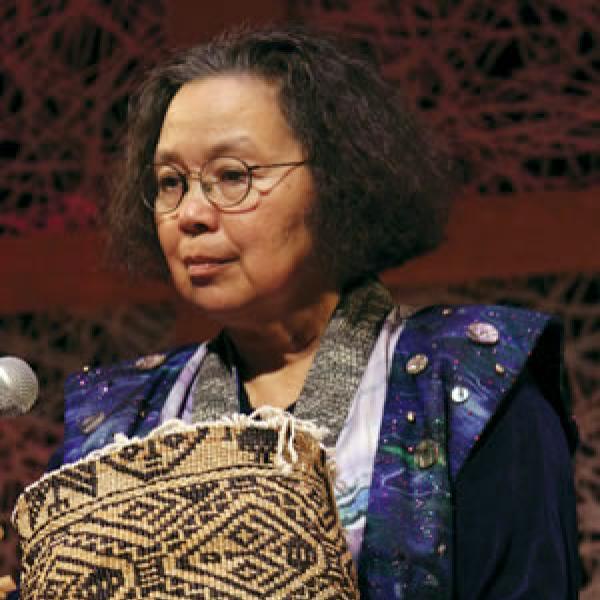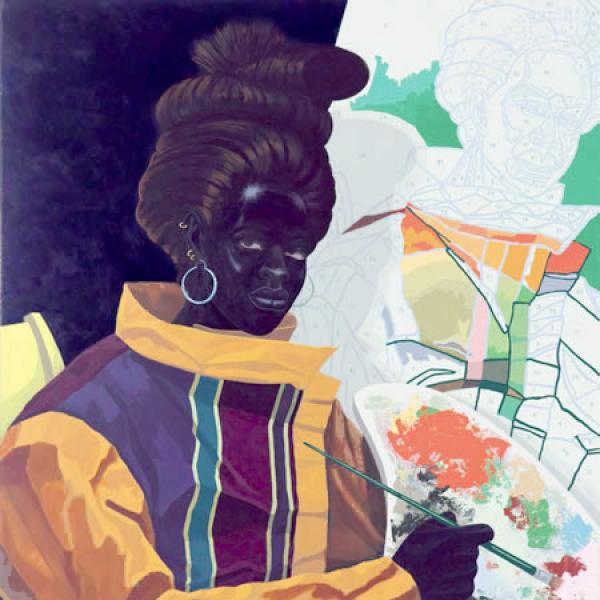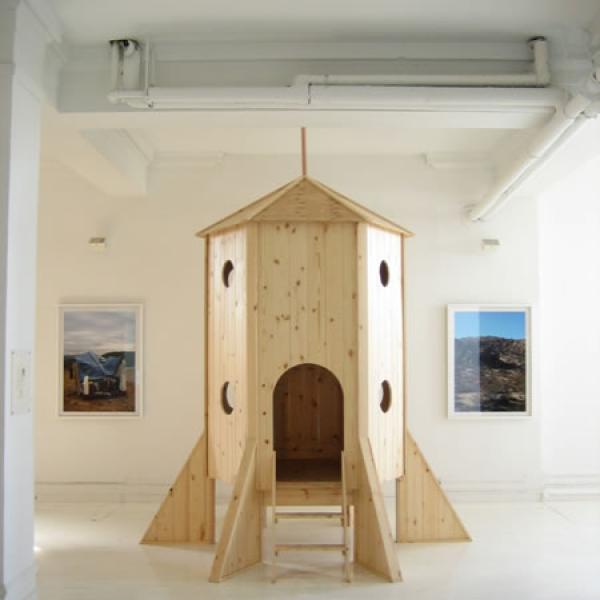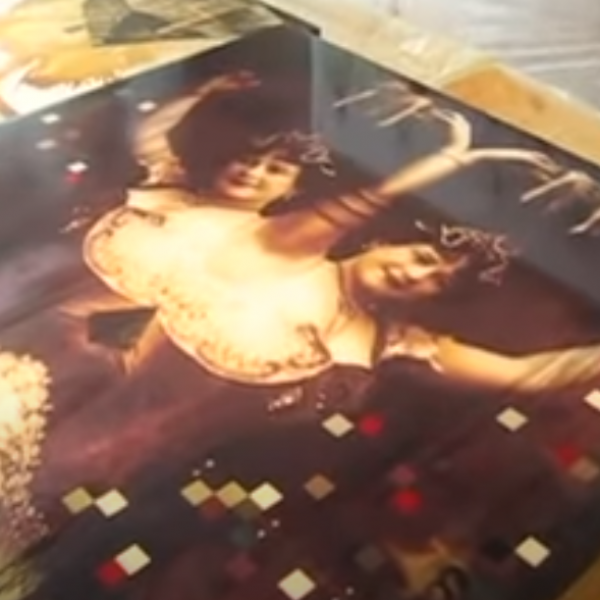Child's Play

Director and playwright Mary Zimmerman. Photo courtesy of Berkeley Repertory Theatre
In July of this year, Newsweek's article "The Creativity Crisis," about the declining ‘creativity scores' of our nation's children, mentioned a study showing that a large portion of MacArthur Fellowship grantees had developed paracosms -- "fantasies of entire alternative worlds" -- while playing as children. For director and playwright Mary Zimmerman, recipient of the prestigious award in 1998, this does not come as a surprise. "I'm absolutely of the opinion that being very bored as a child makes you make something better for yourself. Just being left on your own to make up a world is absolutely a key ingredient in creativity." Zimmerman is still creating new worlds. Her prolific career has included inventive stagings of Shakespeare, operas, and most notably, her own original pieces, which use sources such as Homeric and Chinese myths, Leonardo da Vinci's journals, and European fairy tales. Lisa Tejero, an actress and long-time collaborator of Zimmerman's, remarked on her director's penchant for less standard fare: "A lot of her source material are stories that start in oral tradition -- they have a greater truth in the sense that these are universal truths of being human."
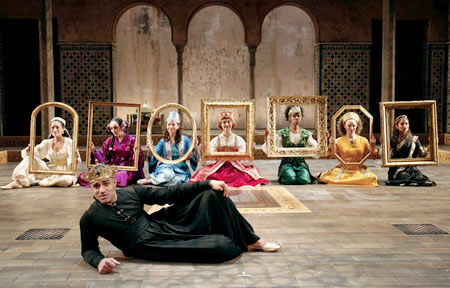
Mirror of the Invisible World, adapted and directed by Mary Zimmerman for the Goodman Theatre in Chicago, starring Faran Tahir (foreground) as King Bahram. Photo by Liz Lauren |
Zimmerman's new works do not come from simple living room tales. Sprawling epics like The Odyssey have lent themselves to her oeuvre, as have more opaque pieces like the self-reflective Remembrance of Things Past. Yes, Proust. "I'm very drawn to how to stage the impossible," said Zimmerman. "A lot of the things I adapt were not meant for the theater -- they were meant for either the solo storyteller or solo reader." This is where Zimmerman's out-of-the-box playfulness, what Tejero calls her "childlike whimsy," springs from, and it's something that few American theater directors achieve to the same success and popularity. Proust's multivolume work became Eleven Rooms of Proust, a site-specific show in which audience members walked from room to room in an old warehouse to experience 11 scenes distilled from the French masterpiece. Inspired by the unique architecture, Zimmerman began utilizing not only the space -- the staircases, the loading dock, the windows -- but also the interplay of light and shadows her lighting designer, John Culbert, threw on the walls.
Zimmerman's creativity is at its peak when she's staging the impossible. In The Odyssey, when confronted with how to depict the Siren song that tempts Odysseus and his men, Zimmerman acknowledged that they couldn't sing: "We can't possibly sing well enough that people will want to give up their homes and families for it. And then I said, ‘what would be the thing that every man wants to hear?'" The end result was six red-clad women as different male fantasies (a girl scout, nurse, teacher, businesswoman, nun, and bride), cooing seductive phrases: "No, don't worry, I'll pick it up" and "Everything...you say...is so... important."
For her original projects, Zimmerman does not enter the rehearsal room with script in hand...because there is no script. Which doesn't mean that the structure isn't already there: "I'm making up an adaptation of a story that already exists, and often the big moves I have to make are structural. Like with The Arabian Nights, there are 384 stories. I'm trying to whittle it down to something that can happen in a couple of hours."
Over the weeks of rehearsal, Zimmerman will come in each day with new material she's written, tailoring it to her company of actors. Tejero and Anjali Bhimani both were quick to tell of an inspirational analogy Zimmerman has used to start rehearsals, likening the process to an archaeological dig, in which the company "all had to work to unearth [the play] together. We couldn't sit back but also couldn't dig too fast. And this is the sense of collaboration. The show is there -- we just have to uncover it."
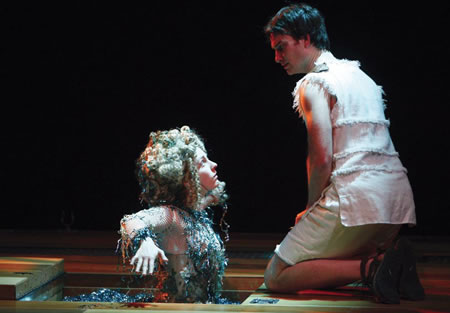
Atley Loughridge as Dyrope and Justin Blanchard as Hylas in the Washington, DC Shakespeare Theatre Company's production of Argonautika, written and directed by Mary Zimmerman. Photo by Carol Rosegg |
Movement sequences, another Zimmerman staple, are often a collaboration of Zimmerman and her cast. The framework for a physical sequence -- such as Cinyras and Myrrha's incestuous, aquatic encounter in Metamorphoses -- will be given. The actors will propose movements, and, using her keen eye for physicality, Zimmerman will tweak and edit until she's satisfied. As Bhimani, who originated the role of Myrrha, related, Zimmerman "fixed, fine-tuned, and basically choreographed us until she had what she felt was the right amalgam of what she wanted to see and feel watching the movement. She works with the actors to create the best marriage of what we bring to what she wants."
The collaboration is not confined to her actors. Mara Blumenfeld, who regularly designs costumes for Zimmerman, said that "with her new work, you have to come up with the idea of what the sandbox is that you're going to be playing in." And so Daniel Ostling, her most-used scenic designer, and Zimmerman will generally decide on the set first. The lighting design, often by T.J. Gerckens, will follow to transform that space; and then the costumes. Blumenfeld sits in on rehearsals as much as possible: "[W]hat Mary does on the page is such a small part of what her whole vision is, you have to see what she's doing and how the actors are using the space."
Her creativity is apparent when she recognizes the inherent limits of theater. "If you're going to do the fantastical," Zimmerman said, "the stage is a place that's grounded in physics. To haul on gigantic loads of scenery for ten minutes or ten seconds doesn't make sense to me; so you want to be as fleet as the experience of the listener." Zimmerman's answer, often, is to "miniaturize." While rehearsing Candide in August for a co-production between Chicago's Goodman Theatre and DC's Shakespeare Theatre Company, the problem of depicting Holland came up. Instead of bringing on a new set or backdrop, the change of scene was represented by someone blowing on a pinwheel. "I think the use of metaphor in image creates a kind of intimacy in the audience, a sense of profound collaboration. Without anyone saying it, everyone in the room says, ‘Oh, I know what that is.' And that makes a shared human experience -- I'm having the same unspoken associative thought that other people are having."
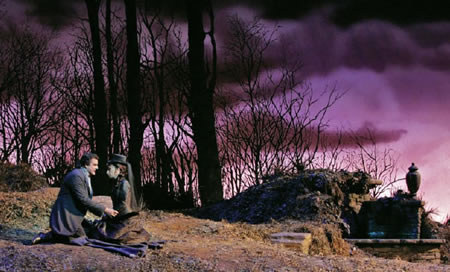
Marcello Giordani and Natalie Dessay in the opera Lucia di Lammermoor, directed by Mary Zimmerman for the Metropolitan Opera in New York City. Photo by Ken Howard/Metropolitan Opera |
Like the actors and designers who can't sit back when Zimmerman asks them to begin their archaeological dig, the audience, too, is implored to enter the make-believe: "The fracturedness quality of that image helps people feel participatory. They're kind of swept along with it -- in the way children don't stop while playing in the backyard and say, ‘Isn't it cool how we're all pretending?' It's unself-conscious and yet it's very delightful and cooperative and exciting."
Zimmerman's work in opera can be viewed as the opposite of her original works. Instead of restructuring an existing tale with artistic license, a director is somewhat at the mercy of the dominant and deeply known force of the score. Zimmerman said of her opera direction that "I'm just supporting the story of the score and the music and trying to make it engaging and beautiful and real." At the Metropolitan Opera, where Zimmerman has staged three works since 2007, a stage director has less control over the casting and design decisions. But despite the mixed response to her productions, there's no denying the ingenuity and playfulness behind her staging. Introducing a ghost during an aria and a formal wedding photo during a moment of introspection in Lucia di Lammermoor drew negative critical comments, but even Anthony Tommasini, the New York Times critic, wrote that the moments were "a powerful image" and "beautifully directed." Her choice to completely shift the opera La Sonnambula from a Swiss village to a modern rehearsal room was excoriated by both critics and a vocal opening- night audience, but was defended as "much more inventive" by her lead, Natalie Dessay, who had initially pleaded with Zimmerman to eschew the work's traditional Alpine setting.
Ultimately, whether Zimmerman is working from an existing script or improvising her own, her projects are still infused with that sense of child's play, where an English backyard can become a completely different world, a stage can be a ship, and fabric can substitute for water. And it's the collaboration between the director, actors, designers, and audience that makes for a transcendent evening at the theater; that, in Zimmerman's words, "allows the audience to join hands with the performer, cross the footlights, and create a bond."



